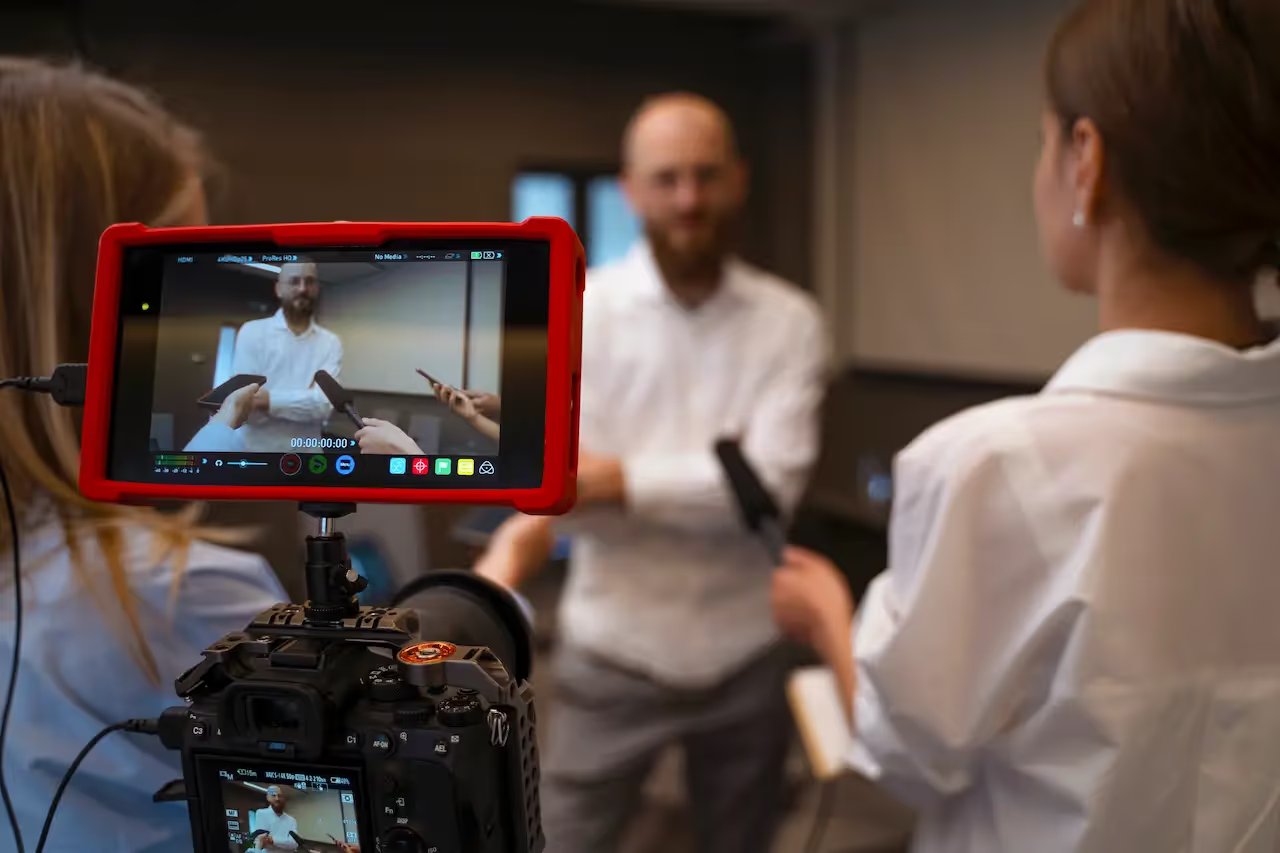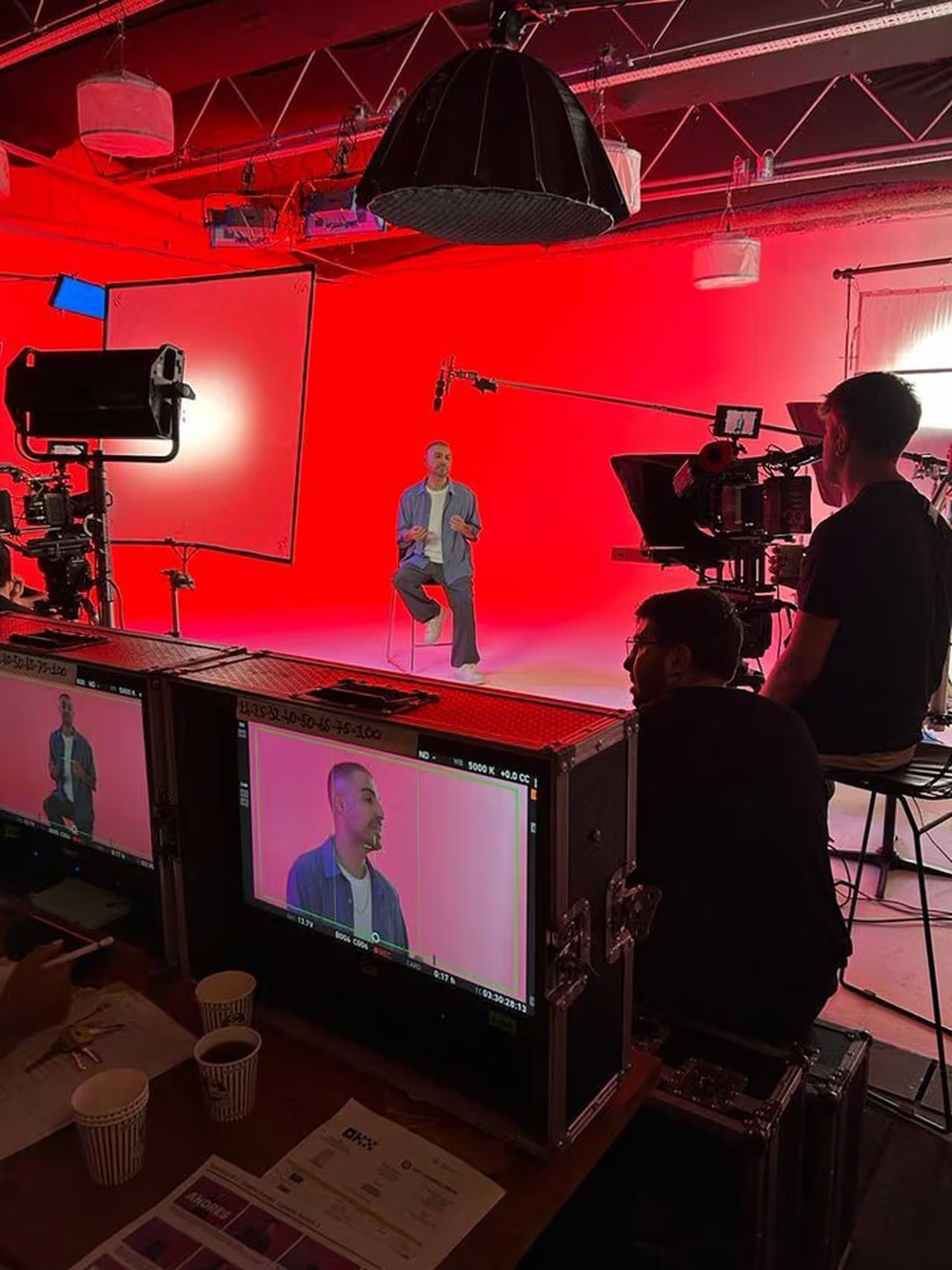Table of Contents
Healthcare video production is different from any other type of content. It involves real people, private medical stories, and often emotional subjects. Making a mistake can not only damage your message, it can also hurt trust or even cause legal problems. That is why this kind of video needs to be done carefully, with a focus on respect, privacy, and clarity.
At Get Camera Crew, we specialize in producing medical video content that is both compliant and meaningful. From scripting to delivery, our team works with care to support healthcare providers, hospitals, and wellness brands in telling stories that matter, while protecting everyone involved.
Who You’re Speaking To and Why It Matters
Before you begin any healthcare video, think carefully about your goal and your audience. What do you want the video to achieve? Common goals include raising awareness, educating patients, training staff, recruiting new employees, or fundraising for healthcare programs.
Once you set your goal, consider who will be watching. Patients, families, nurses, doctors, and community leaders all have different needs. A video meant for patient education should use simple words and a calm tone. A staff training video may need more details and clear visuals. Adjust your script, length, and visuals to match the emotion and context of your message.
Protect Privacy and Build Trust
When creating healthcare videos, protecting patient privacy is one of the most important responsibilities. People trust healthcare providers with personal and sensitive details about their lives. That same trust must be protected when video cameras are involved. Privacy is not just a legal issue—it’s a matter of respect and ethics. If your video includes patients, real names, or medical settings, special care must be taken to avoid exposing private information.
Whether the content is for internal training, public education, or a testimonial, the production must follow strict guidelines. Every crew member, editor, and producer needs to understand how to film and work with care.
Here are key ways to protect privacy and build trust in healthcare video production:
- Always get written patient consent before filming
Consent should be clear, in writing, and include how and where the video will be used. Never assume permission just because someone appears in the background. Verbal agreements are not enough, written forms are needed for protection. - Blur or crop out private details if consent is not given
If a patient is in the background, or their name is on a wristband, chart, or monitor, that content must be edited out unless you have specific permission. It’s better to film from safe angles or use generic footage when privacy cannot be guaranteed. - Use HIPAA-compliant video storage and platforms
All video files should be stored securely and only shared with the right people. Use cloud services or platforms that meet HIPAA standards to avoid leaks or unauthorized access. This protects both the patient and your organization. - Train your crew on privacy expectations
Everyone on set, from camera operators to assistants, should know how to act in a medical space. This includes keeping voices down, staying out of the way during care, and respecting staff and patient boundaries. Simple training can prevent serious mistakes.
By following these steps, you not only follow the law, you also build real trust with your audience. When patients feel respected and protected, they are more likely to share their story or participate in future projects. And when viewers see that you handle sensitive content with care, it reflects well on your brand, your values, and your commitment to doing things the right way.
Tell Stories That Humanize Without Exploiting
Real stories are one of the most meaningful parts of healthcare video production. They show the human side of care, illness, recovery, and everyday support. These stories help viewers relate to your message, understand complex topics, and feel more emotionally connected. But they must be told with care. It is easy to cross the line between honesty and exploitation, especially when working with vulnerable people or sensitive topics.
Start by building a relationship with the person who will be featured in the video. Explain the purpose of the video and where it will be shared. Make sure they feel comfortable and know they can say no to anything that makes them uneasy. Trust must come before storytelling.
When you are ready to film or edit, keep these key principles in mind:
- Introduce people with honesty and care
Show who they are in a respectful way. Use their name, role, or background only if they approve. Keep the introduction simple and warm, without making them seem like a character in a dramatic scene. - Focus on healing, care, or progress
Share parts of the story that offer hope or understanding. Highlight the steps they’ve taken, the support they received, or the small wins along the way. Avoid making the story only about pain or struggle. - Avoid dramatic effects or emotional tricks
Let the person’s natural emotion be enough. Do not add intense music, slow motion, or exaggerated editing. These tools may make the video feel fake or uncomfortable to watch. - Stick to facts and real experiences
Never overpromise or stretch the truth. For example, do not describe a treatment as a miracle unless that is the language the person used. Be careful not to give false hope or create unrealistic expectations. - Let the speaker talk in their own words
If they cry, pause, or laugh, let it happen. Their voice is what makes the story real. Avoid scripting or interrupting them unless they ask for help. The goal is to capture something genuine.
By following these steps, you make sure the story stays focused on the person and not just the brand. You create something that honors the experience instead of using it. In healthcare, this approach builds trust, encourages respect, and shows that your video production values people above all. This not only protects patient dignity—it creates content your audience will connect with and remember.
Also read: Video Marketing for Startups: Budget-Friendly Strategies That Work
Production Details That Make a Difference
During healthcare video production, the small choices made on set can have a big impact. Filming in medical environments means being careful, respectful, and organized. Viewers can tell when a video feels natural and trustworthy, and much of that depends on how it was filmed. From lighting and sound to planning and backup, every detail should support the story and protect those involved.
Here are key filming practices that help your healthcare video feel more human, calm, and professional:
- Use natural lighting when possible
Filming near windows or using soft lighting creates a warm, real look. Harsh lights can feel cold or staged. Natural light helps viewers feel closer to the subject and keeps the video honest in tone. - Capture clean audio
Clear sound is just as important as clear visuals. Use proper microphones to record voices without background noise. When people speak clearly and are easy to hear, the whole video feels more professional and easier to understand. - Film in real healthcare spaces
Whenever you can, shoot in actual clinics, waiting rooms, or treatment areas (with permission). These familiar settings make the video feel genuine. Avoid sets that look fake or overly perfect, unless privacy requires it. - Plan around care schedules
Respect the daily routines of medical staff and patients. Never interrupt treatments or get in the way. Work with clinic managers to schedule shoot times that don’t disturb care. - Save multiple backups and signed forms
Always keep more than one copy of your footage. Also, store all signed consent forms safely. If anything goes wrong later, like a lost file or a question about permission, you will be prepared.
These simple habits go a long way. They help you film smoothly while showing respect for both the people on screen and the teams working behind the scenes. When a video feels careful and respectful, viewers trust it more—and that trust reflects well on your entire healthcare brand.

Post-Production: Edit With Empathy
Once the filming is done, the editing stage becomes just as important—especially when dealing with healthcare content. This is the time when the story is shaped, the message becomes clear, and the overall tone is set. In healthcare video production, the editing must reflect care, patience, and accuracy. A rushed or overly stylized edit can feel out of place, especially when the topic is serious or personal. Your goal should be to keep the video calm, respectful, and easy to follow for all viewers.
Here are some key editing tips to help maintain trust and clarity in your healthcare videos:
- Avoid quick cuts or flashy effects
Fast transitions, loud animations, or dramatic visuals often work in commercials, but not in healthcare. Use slower pacing and simple transitions that support a calm and thoughtful mood. This helps viewers focus on the message without feeling overwhelmed. - Add closed captions and subtitles
Always include captions for those who are deaf or hard of hearing. Subtitles in multiple languages also make your content easier to understand for a wider audience. This is especially helpful in diverse communities or international campaigns. - Double-check all medical facts and visuals
If the video includes health statistics, treatment descriptions, or medical terms, review everything for accuracy. Mistakes in health information—even small ones—can cause confusion or harm. Check the spelling of medical terms and verify voiceover scripts before final approval. - Use private or secure platforms when needed
If your video contains sensitive or patient-facing content, do not upload it to public sites like YouTube unless all parties have agreed. Instead, share it through private links or password-protected platforms to keep control over who sees it.
Good editing is not just about making a video look nice, it is about treating the message with the same level of care you gave during filming. A thoughtful, accurate, and gentle editing process helps ensure your healthcare video is helpful, respectful, and ready to be shared with confidence. This is how you protect your subjects, your audience, and your brand all at once.
People Also Ask
What makes healthcare video production different?
Healthcare video production involves real people and sensitive information. It requires a balance between storytelling, accuracy, and privacy that is not needed in most other industries.
How do you ensure HIPAA compliance in videos?
HIPAA compliance starts with written consent. It also includes blurring personal data, using secure video storage, and making sure the crew is trained in privacy rules.
What’s the best way to film a patient testimonial?
First, gain full consent and explain how the video will be used. Choose a quiet space, allow the patient to speak in their own words, and avoid coaching them too much. Keep the tone respectful and natural.
How long should healthcare videos be?
It depends on the goal. A short video for social media might be one minute, while a staff training video may run five to ten minutes. Keep it clear and only as long as it needs to be.
Conclusion
Producing a healthcare video means more than turning on a camera. It means being thoughtful, respectful, and fully prepared from the first meeting to the final upload. You need to follow privacy laws, protect trust, and present clear, useful content every time.
Need a video production team that understands sensitivity, compliance, and storytelling? Partner with Get Camera Crew, we’ll help you create healthcare videos that are respectful, effective, and professionally delivered.






